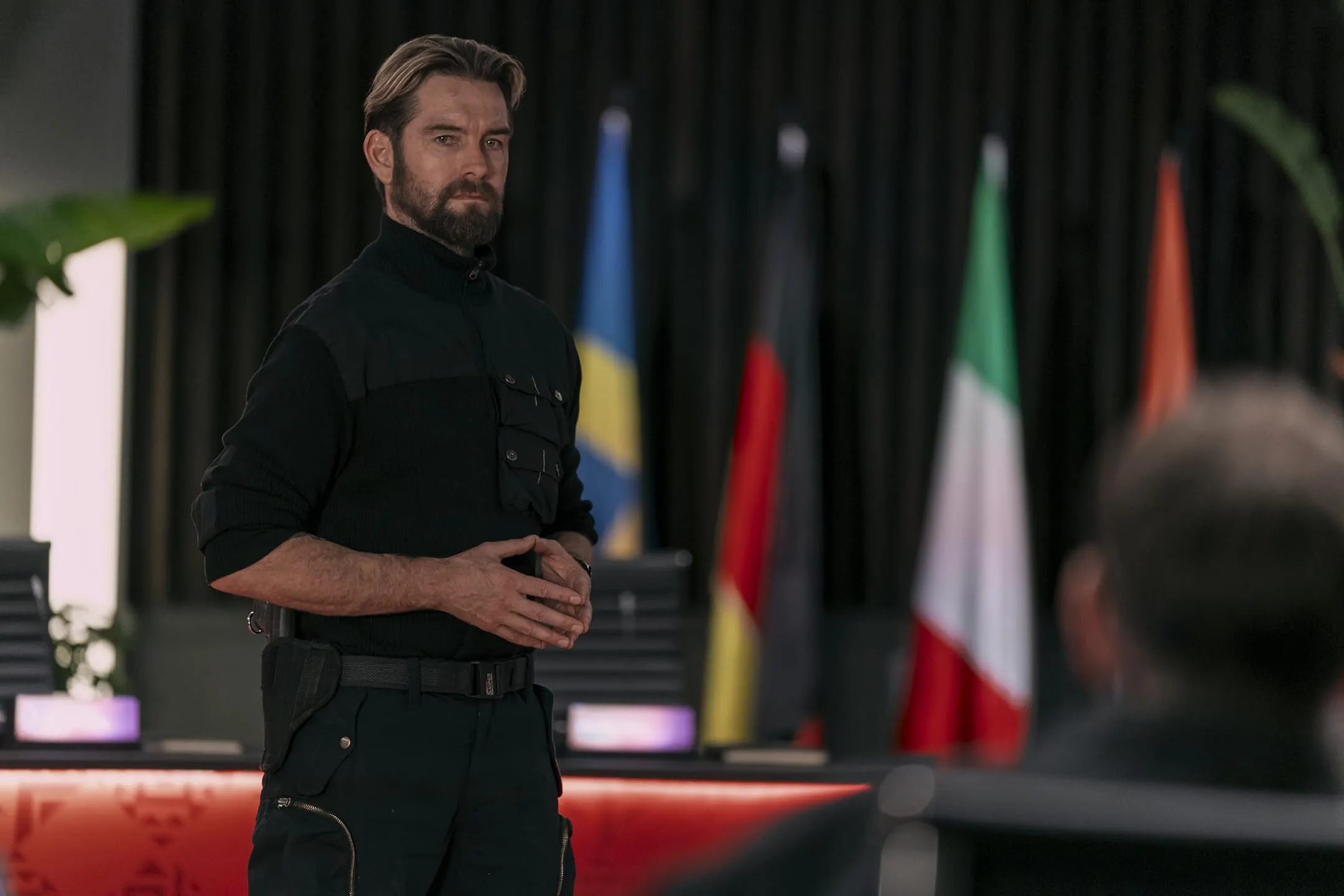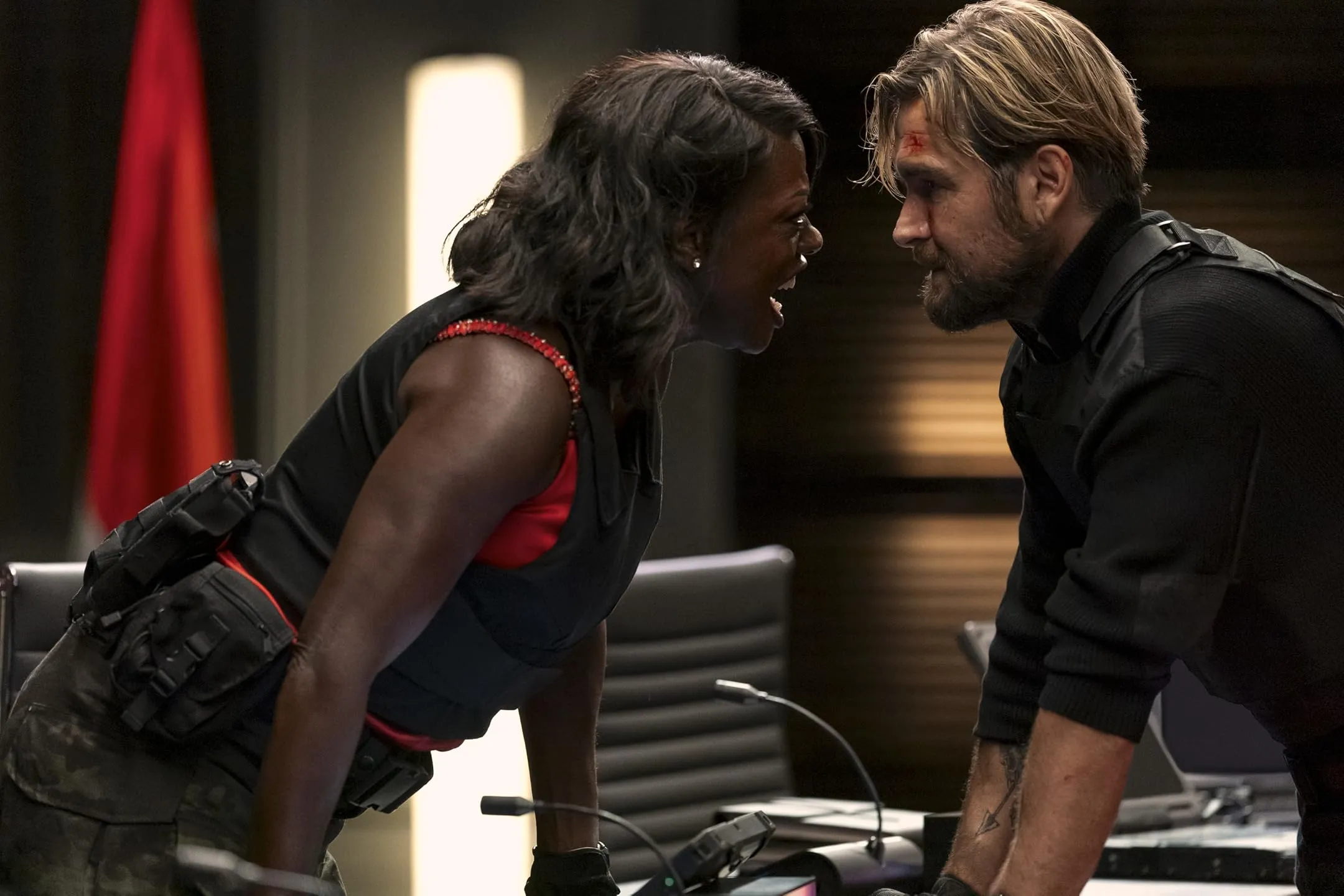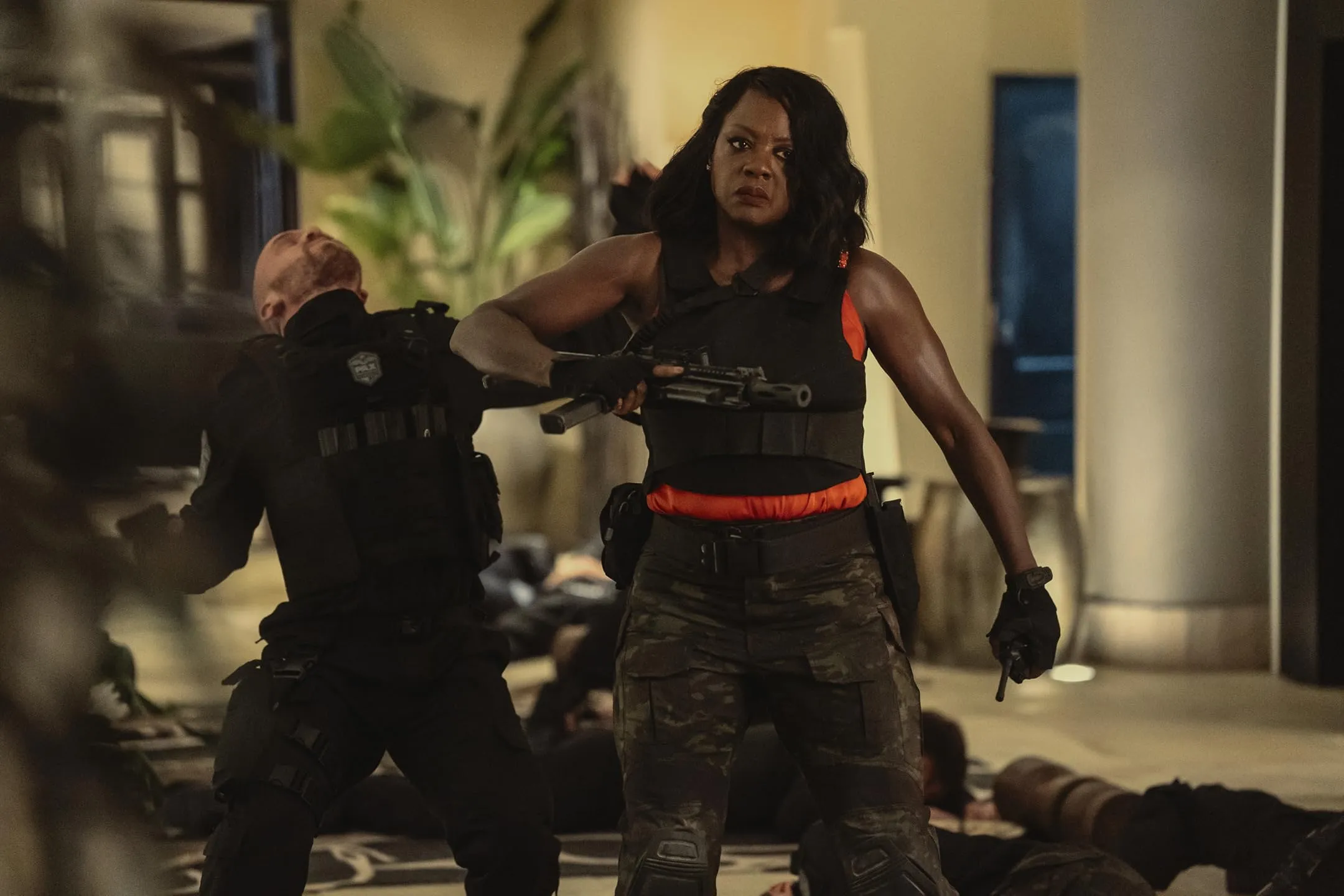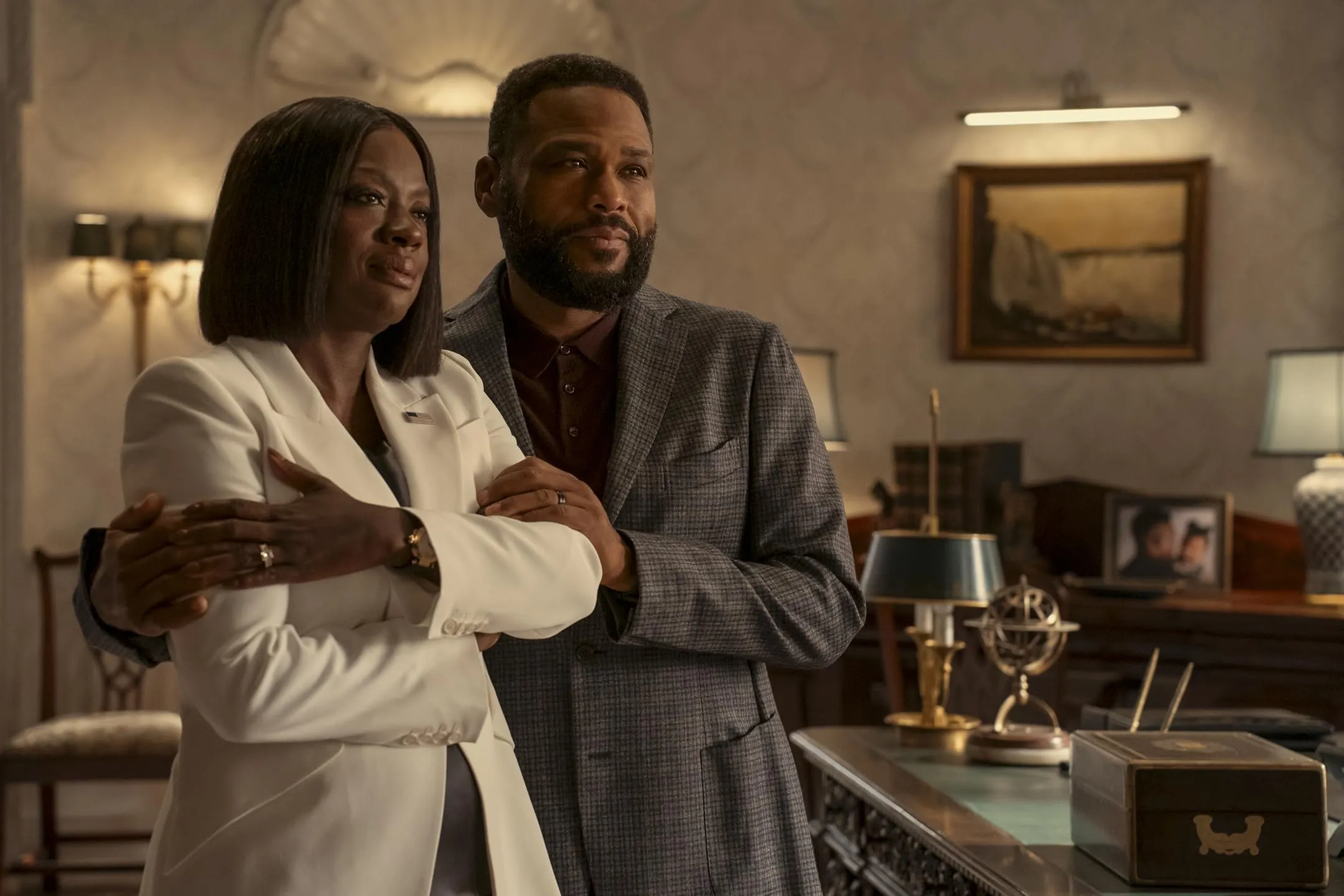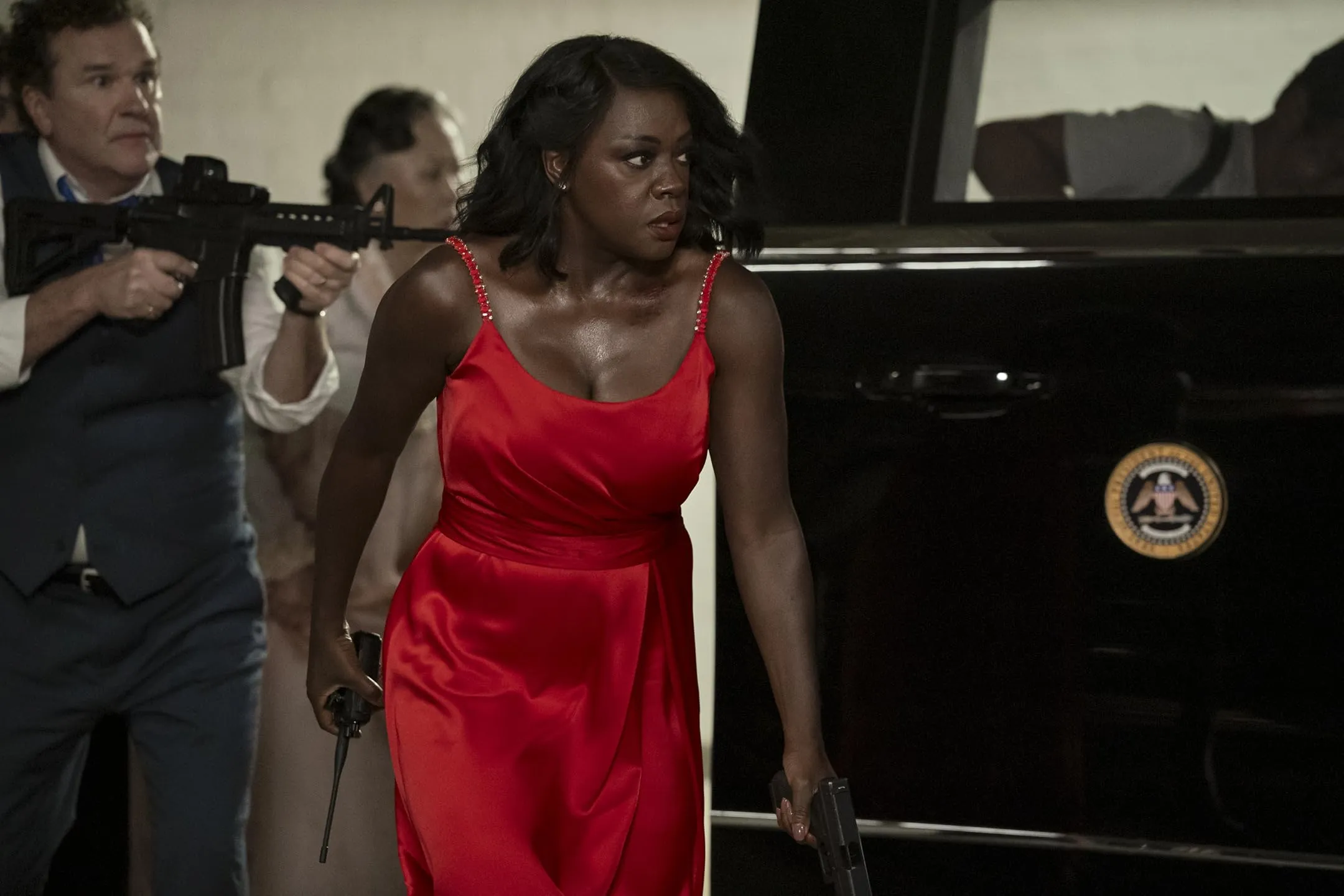G20 unfolds at Cape Town, where the international stage brings together a cadre of global leaders in the midst of a disruptive crisis. In this film, a U.S. president takes charge in the midst of looming geopolitical threats, stepping away from traditional presidential decorum to confront unexpected violence.
The narrative sets forth a scenario where high-caliber political strategy intersects with immediate, pulse-pounding action on screen. A meticulously orchestrated crisis unites the intricate demands of a global summit with the personal complexity of a leader who grapples with responsibilities at home.
Against the backdrop of international diplomacy, each scene vibrates with raw energy. As world leaders converge to manage economic imperatives, the sudden eruption of chaotic conflict transforms a conventional political forum into a battleground for survival.
The film crafts its plot with a confident mix of strategic maneuvering and kinetic set pieces, where every confrontation on screen contributes to a narrative marked by deliberate pacing and palpable tension. A sense of earnest engagement permeates the unfolding drama, positioning the president as a figure defined by strength and resolve in equal measure.
Crisis and Confrontation: The Narrative Framework of G20
The film opens with President Danielle Sutton preparing for a landmark summit, where diplomatic gravitas collides with domestic complexities. Sutton stands poised at the helm of a geopolitical stage, her presence accentuating the delicate balance between statecraft and personal duty. In this opening tableau, national imperatives and familial responsibilities are set against the grandeur of an international gathering, establishing a narrative rich with stakes at both macro and micro levels.
A meticulous inciting incident propels the story from measured preparation into a maelstrom of chaos. A precise and daring terrorist assault engulfs the summit, orchestrated by a meticulously calculated villain whose actions disrupt the orderly assembly of world leaders.
The introduction of the “Together Plan”—a visionary scheme designed to infuse innovation into failing economies—imparts a sense of possibility within the pressure cooker environment. This financial initiative serves as the backdrop against which the rogue elements execute their audacious bid, turning a diplomatic conference into a stage for modern warfare.
Parallel to the central upheaval runs a narrative thread that captures the tensions and aspirations of the Sutton family. Conflicts with a rebellious teenager and the understated challenges faced by her husband infuse the plot with domestic human drama. Secondary characters from both political and security spheres lend further dimension to the unfolding crisis. Their involvement ensures that every breach of order or unexpected maneuver ripples across multiple layers of the narrative.
The pacing shifts deftly—from slow-building political preparation to a swiftly escalating conflict marked by sudden betrayals and moments of electrifying suspense. This careful modulation of tempo crafts sequences of strategic planning and impulsive confrontation, set against a backdrop of relentless adversarial intent. Each narrative pivot introduces heightened suspense as President Sutton is forced to confront the multifaceted threats imperiling her leadership.
Forces in Motion: Characters Shaping the Narrative
President Danielle Sutton emerges with a history marked by valor and sacrifice. Her journey from a decorated warrior to a national leader is rendered with precision, capturing both the grit of a battlefield veteran and the sensitivity required of a family figure.
Her presence drives the film forward as she transitions in physicality during action sequences—a transformation that marries traditional statesmanship with high-adrenaline combat. This portrayal underscores a leader who commands respect yet remains intimately connected to her loved ones.
In the shadows of this formidable presence, her husband, Derek Sutton, provides a counterpoint of calm support. His portrayal conveys an individual who balances the pressures of leadership with moments of quiet resolve and occasional displays of vulnerability. Each interaction hints at the unspoken strength that anchors the escalating chaos surrounding him.
The script introduces a young daughter whose tech-savvy rebellion signals the fresh challenges of a new era. Serena embodies a modern defiance, actively engaging with digital tools while questioning established authority. Her subplot threads through the central conflict, lending fresh momentum to themes of innovation and generational change. The presence of a young son, Demetrius, adds subtle nuance, hinting at the collateral impact of national crises on family cohesion and youth.
Manny, a tireless bodyguard, injects a sense of urgency and reliability into the unfolding drama, his every action evidencing meticulous training and unwavering loyalty. Against this backdrop stands Edward Rutledge, a villain whose calculated motives reflect both a personal vendetta and a more expansive challenge to societal norms. His performance recalls iconic cinematic adversaries, combining menace with a dark charisma that commands attention.
The interplay among these figures forms a dynamic canvas—each encounter, every glance, and split-second of action contributes to a film that pulses with unrelenting purpose and artistic insight.
Visions of Kinetic Mastery
The action unfolds with a bold choreography that recalls the celebrated dynamism of classic action fare. A sequence in an elevator shaft grips the viewer with its claustrophobic tension while moments of acrobatic combat in confined spaces provoke the pulse with an energetic clarity. The camera dances between close-ups of determined faces and wide shots that capture the sprawling chaos, each frame meticulously arranged to maximize the dramatic punch of every confrontation.
Handheld shots inject a raw immediacy into the scenes, contrasting with steadier compositions during quieter instants, a choice that sharpens the contrast between controlled strategy and unbridled turmoil. Lighting is deployed with an artful precision; stark contrasts and ambient glows coalesce to spotlight moments of fierce resistance and vulnerability alike. The framing of every encounter is purposeful, often isolating characters against vast, undecorated expanses, a visual reminder of the isolation encountered in moments of crisis.
The director opts for a deliberate mixture of intimate character moments interlaced with the spectacular scale of action. Each set piece—from a high-velocity pursuit through twisting corridors to the chaotic melee in a cramped kitchen—serves not merely as spectacle but as a refined thread in a broader narrative fabric.
Special effects and practical stunts cohabit the frame seamlessly; scenes featuring digital manipulations serve to heighten both the verisimilitude and modern flair of the conflict. These calculated visual moments configure the crisis with a refined, almost balletic impact.
Sovereign Dynamics: Intersections of Leadership and Ideology
President Sutton appears as an emblem of modern governance, shifting the conventional mold of leadership with a resolute mix of decisiveness and compassion. Her cinematic journey interlaces the duties of state with the delicate strains of personal life, establishing a figure whose public fortitude is paired with sincere domestic care. The film paints this portrayal with a quiet confidence, offering a vision of authority that defies the simplifications common to action narratives while engaging issues of duty and personal sacrifice.
The narrative casts a stark light on global financial fragility and emergent digital phenomena. Debates over cryptocurrency and the unsettling rise of artificial facsimiles of power convert the political arena into a vibrant battleground, where innovative financial strategies serve as symbols of an evolving economic order. The script scrutinizes these modern challenges through precise set pieces that not only entertain but also provoke reflection on the shifting nature of economic and political influence.
Gender transforms the discourse as the film positions a female leader at the helm of widespread upheaval. Sutton’s choice of pragmatic attire and her kinetic presence challenge long-established expectations of decorum in political narratives.
The tension between her public responsibilities and the private strains within her family illuminates the sacrifices demanded by an office steeped in relentless scrutiny. In this environment, ideological visions collide with practical limitations, framing a scenario where ideals must be carefully negotiated amid the ever-present pressures of crisis and commitment.
Verbal Precision and Visual Craft
The screenplay unfolds with a measured cadence, interspersing staccato exchanges with moments of quiet authority. Sharp military jargon intermingles with terse political rhetoric and casual banter, forging a distinctive tone that both grounds and enlivens the narrative.
The dialogue sometimes delivers crisp, unforgettable lines, while at other moments it veers toward simplicity, a choice that sharpens the contrast between high-stakes confrontation and the domestic strains beneath. Writers manage an intricate layering of elements—the terrorist siege, intense political dialogues, and familial exchanges—without losing sight of a central narrative pulse. Each spoken line pulses with an economy of words that mirrors the film’s relentless pace.
The set design recreates a high-profile international summit with a meticulous eye for detail. Innovations in modern technology stand alongside practical effects, crafting sequences that both honor traditional action motifs and introduce a modern twist.
The use of digital alterations and tangible stunts weaves an aesthetic marked by calculated precision. A musical score punctuates the unfolding drama with recurring motifs that reinforce every surge of tension. Sound design fashions an auditory space that not only deepens the impact of explosive sequences but also underscores the quiet moments where stakes are defined by a single whispered phrase.
Interwoven Realms of Action and Insight
G20 orchestrates a multifaceted narrative that threads political tension, adrenaline-fueled confrontations, and delicate familial bonds into a single cohesive tapestry. The film maneuvers between the charged atmosphere of global summits and the intimate corridors of home life, creating a stage where high-stakes diplomacy and kinetic spectacle exist side by side.
Action tropes reminiscent of classic blockbusters are invigorated with a modern lexicon of political commentary, reimagining the conventions of the genre and questioning the established criteria of male-centric heroics. The story’s structure refines the interplay between calculated strategic encounters and spontaneous bursts of physicality, reflecting a layered approach that simultaneously satisfies genre expectations and challenges them.
The cast offers a robust performance ensemble that enhances this structural ambition. The commanding presence of the lead is complemented by a carefully curated group of supporting talents, whose subtle nuances and dynamic interactions contribute to a broader, more intricate portrait of leadership and resistance. The director’s deliberate pacing and innovative scene construction provoke a reconsideration of familiar narrative modes while affirming the film’s enduring appeal within a shifting cinematic landscape.
The Review
G20
G20 redefines the action-thriller with an audacious display of political tension and dynamic combat. The film delivers high-voltage spectacle interwoven with incisive commentary on leadership and modern power structures, driven by a commanding lead performance. It challenges traditional genre limits, fusing razor-sharp narrative turns with kinetic, unforgettable set pieces. This creative synthesis of excitement and insight secures G20 a lasting mark on contemporary cinema.
PROS
- Bold, energetic action scenes
- Powerful, commanding lead performance
- Detailed, inventive production design
- Engaging political and financial commentary
- Fresh take on gender roles in crisis
CONS
- Some dialogue feels overly clipped
- Certain subplots lack depth
- Visual transitions can be uneven









































